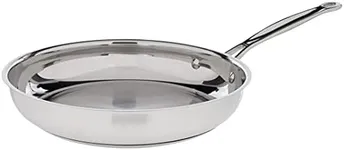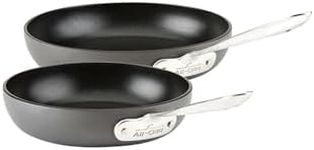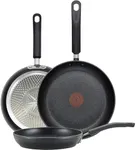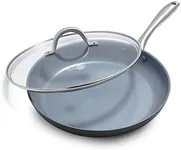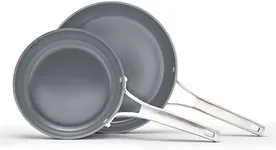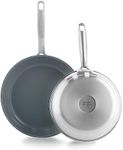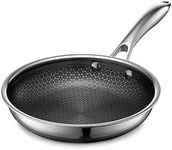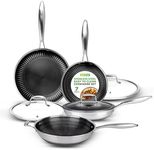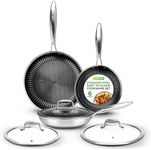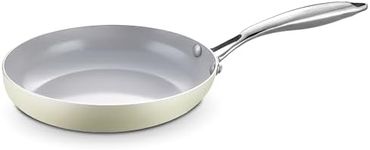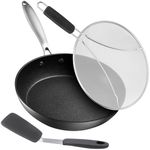Buying Guide for the Best Induction Frying Pan
Choosing the right induction frying pan can significantly enhance your cooking experience. Induction frying pans are designed to work with induction cooktops, which use electromagnetic fields to heat the pan directly. This method is efficient, precise, and can lead to better cooking results. When selecting an induction frying pan, it's important to consider several key specifications to ensure you get the best fit for your cooking needs.MaterialThe material of the frying pan affects its heat conductivity, durability, and ease of cleaning. Common materials include stainless steel, cast iron, and non-stick coatings. Stainless steel is durable and resistant to rust, but it may not heat as evenly as other materials. Cast iron retains heat well and is excellent for searing, but it is heavy and requires maintenance to prevent rust. Non-stick coatings make cleaning easier and reduce the need for oil, but they can wear out over time. Choose a material based on your cooking habits and maintenance preferences.
SizeThe size of the frying pan determines how much food you can cook at once. Frying pans typically range from 8 to 14 inches in diameter. Smaller pans (8-10 inches) are ideal for single servings or small portions, while larger pans (12-14 inches) are better for family meals or cooking multiple items at once. Consider the size of your cooktop and the amount of food you usually prepare when selecting the size of your frying pan.
WeightThe weight of the frying pan can impact its ease of use. Heavier pans, like those made from cast iron, provide better heat retention and even cooking but can be cumbersome to handle. Lighter pans, such as those made from aluminum or with non-stick coatings, are easier to maneuver but may not distribute heat as evenly. Choose a weight that you are comfortable handling, especially if you frequently move the pan from the stovetop to the oven or table.
HandleThe handle of the frying pan affects comfort and safety during use. Look for handles that are securely attached and made from heat-resistant materials. Some handles are designed to stay cool during cooking, which can prevent burns. Additionally, ergonomic handles can provide a better grip and reduce strain on your wrist. Consider your comfort and safety when choosing a frying pan with the right handle.
Induction CompatibilityNot all frying pans are compatible with induction cooktops. Induction frying pans must have a magnetic base to work with the electromagnetic field of the cooktop. Check for labels or specifications that indicate induction compatibility. You can also test the pan with a magnet; if the magnet sticks to the bottom, the pan is suitable for induction cooking. Ensure the frying pan you choose is specifically designed for induction use to avoid any compatibility issues.
Non-Stick CoatingNon-stick coatings can make cooking and cleaning easier by preventing food from sticking to the pan. These coatings are especially useful for cooking delicate items like eggs or fish. However, non-stick coatings can wear out over time and may require special utensils to avoid scratching. If you prefer low-fat cooking and easy cleanup, a non-stick frying pan may be a good choice. Be sure to follow the manufacturer's care instructions to prolong the life of the coating.
Oven-Safe TemperatureSome recipes require transferring the frying pan from the stovetop to the oven. In this case, it's important to choose a pan that is oven-safe. Check the manufacturer's specifications for the maximum oven-safe temperature. Pans with metal handles and without non-stick coatings typically have higher oven-safe temperatures. If you frequently use your frying pan in the oven, ensure it can withstand the temperatures required for your recipes.

